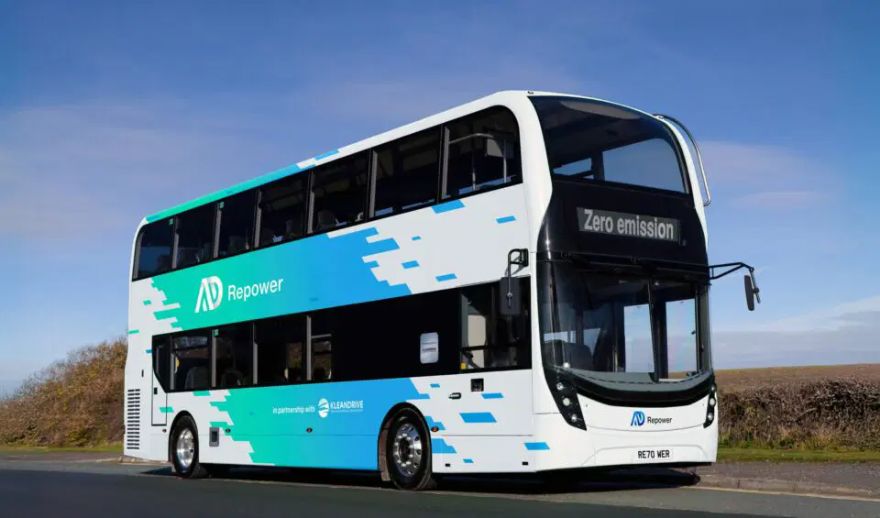 Alexander Dennis
Alexander Dennis, a subsidiary of the global sustainable bus and coach solution provider
NFI Group Inc, has announced that it will offer the AD Repower electric repowering solution for its diesel buses in partnership with the specialist engineering firm
KleanDrive. The solution will cut out tailpipe emissions and extend the operating life of existing fleets, while complementing the manufacturer’s newly built next-generation electric buses.
AD Repower will initially be available in the UK for the Alexander Dennis Enviro400 double decker, with a first pilot bus scheduled to be on the road in the first half of 2026. With sufficient demand, other models and other markets could follow.
Under the partnership, KleanDrive replaces the buses’ existing diesel engine and transmission with its plug and play electric drivetrain system and control software. A ‘novel skid system’ houses a ‘Voith electrical drive system’ (VEDS) motor and all power electronics, allowing for easy installation. VEDS is also used in Alexander Dennis’s next-generation electric buses, allowing operators to benefit from familiar and proven technology.
Full seating capacity retainedEnergy is stored in 352kWh lithium-iron-phosphate batteries from CATL, for which KleanDrive expects a driving range on a single charge of 195 miles at 50% passenger occupancy — and the AD Repower conversion maintains the Enviro400’s interior layout, allowing existing buses’ full seating capacity to be retained.
KleanDrive’s CEO Joe Tighe said: “This is a great solution for operators and the environment. Alexander Dennis buses are renowned for the quality of the body and chassis, and by repowering them with an EV drivetrain we can maximise the lifespan of vehicle while eliminating noxious emissions and slashing running costs and CO
2 emissions. By repowering rather than prematurely replacing, we avoid throwing away a perfectly good vehicle and the CO
2 that is embedded within that.”
He concluded: “Our solution is a plug and play, modular drivetrain that replaces the existing engine and transmission and interfaces perfectly with the bus controls and instrumentation. It is designed for the conversion to carried out at the fleet operator’s premises, which reduces time off the road and allows the local technicians to carry out maintenance.”